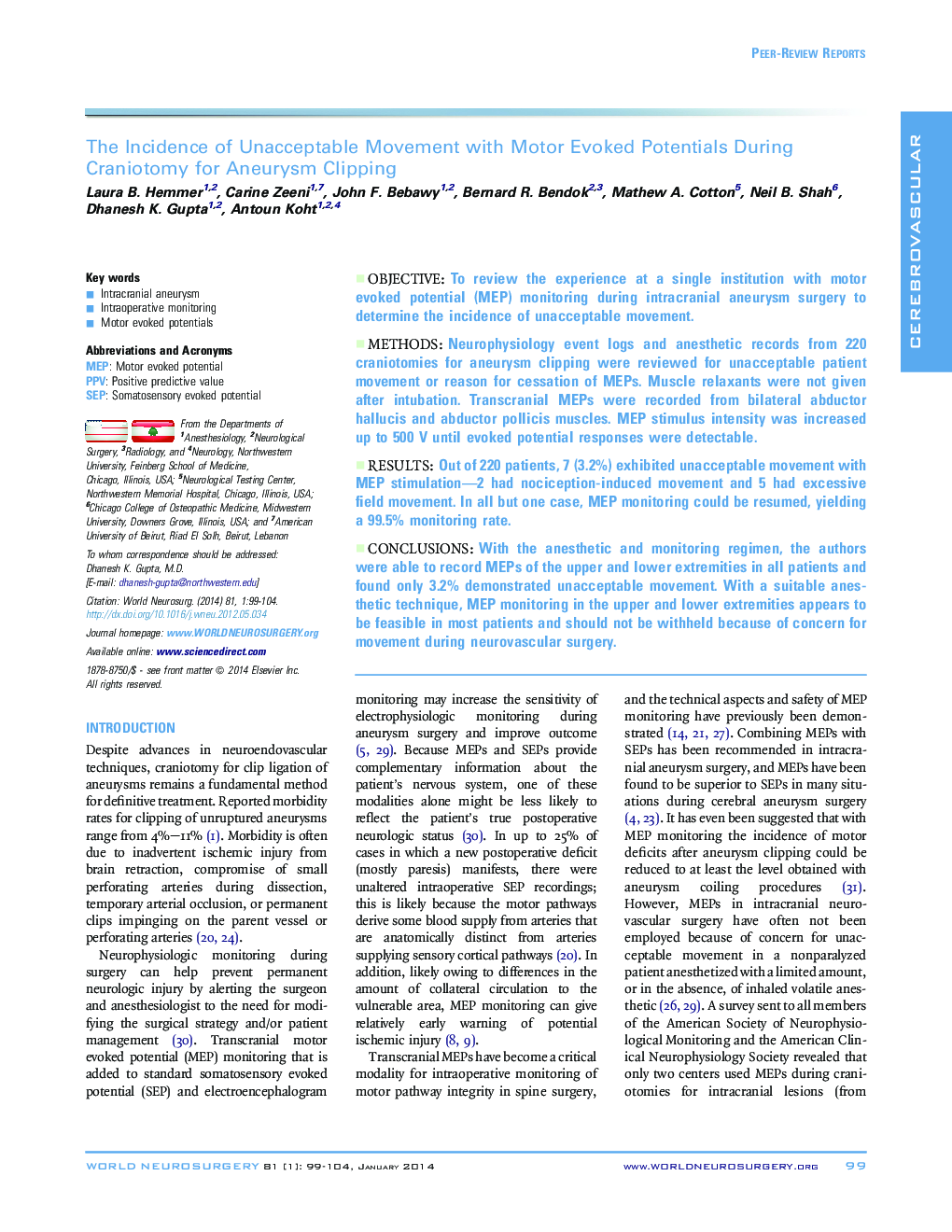| Article ID | Journal | Published Year | Pages | File Type |
|---|---|---|---|---|
| 3095645 | World Neurosurgery | 2014 | 6 Pages |
ObjectiveTo review the experience at a single institution with motor evoked potential (MEP) monitoring during intracranial aneurysm surgery to determine the incidence of unacceptable movement.MethodsNeurophysiology event logs and anesthetic records from 220 craniotomies for aneurysm clipping were reviewed for unacceptable patient movement or reason for cessation of MEPs. Muscle relaxants were not given after intubation. Transcranial MEPs were recorded from bilateral abductor hallucis and abductor pollicis muscles. MEP stimulus intensity was increased up to 500 V until evoked potential responses were detectable.ResultsOut of 220 patients, 7 (3.2%) exhibited unacceptable movement with MEP stimulation—2 had nociception-induced movement and 5 had excessive field movement. In all but one case, MEP monitoring could be resumed, yielding a 99.5% monitoring rate.ConclusionsWith the anesthetic and monitoring regimen, the authors were able to record MEPs of the upper and lower extremities in all patients and found only 3.2% demonstrated unacceptable movement. With a suitable anesthetic technique, MEP monitoring in the upper and lower extremities appears to be feasible in most patients and should not be withheld because of concern for movement during neurovascular surgery.
